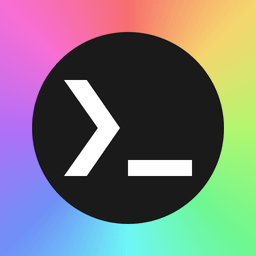

I realized why I didn’t think of base 2 in my previous reply. For one, hexadecimal (base 16) often used in really low-level programming, as a shorthand for working in base 2 because base 2 is unwieldy. Octal (base 8) was also used, but not so much nowadays. Furthermore, even when working in base 2, they’re often grouped into four bits: a nibble. A nibble corresponds to one hexadecimal digit.
Now, I suppose that we’re just going to use powers of two, not base-2, so maybe it’d help if we do a comparison. Below is a table that compares some powers of two, the binary prefixes, and the system I described earlier:
| Decimal value | Value with corresponding binary prefix | Hexadecimal Value | Value with prefixes based on powers of 16 | |
|---|---|---|---|---|
| 20 | 1 | 1 | 1 | 1 |
| 24 | 16 | 16 | 10 | 16 |
| 28 | 256 | 256 | 100 | 256 |
| 210 | 1 024 | 1 Ki | 400 | 1 024 |
| 212 | 4 096 | 4 Ki | 1000 | 4 096 |
| 216 | 65 536 | 64 Ki | 1 0000 | 1 myri |
| 220 | 1 048 576 | 1 Mi | 10 0000 | 16 myri |
| 224 | 16 777 216 | 16 Mi | 100 0000 | 256 myri |
| 228 | 268 435 456 | 256 Mi | 1000 0000 | 4 096 myri |
| 230 | 1 073 741 824 | 1 Gi | 4000 0000 | 16 384 myri |
| 232 | 4 294 967 296 | 4 Gi | 1 0000 0000 | 1 dyri |
| 236 | 68 719 476 736 | 32 Gi | 10 0000 0000 | 16 dyri |
| 240 | 1 099 511 627 776 | 1 Ti | 100 0000 0000 | 256 dyri |
| 244 | 17 592 186 044 416 | 16 Ti | 1000 0000 0000 | 4 096 dyri |
| 248 | 281 474 976 710 656 | 256 Ti | 1 0000 0000 0000 | 1 tryri |
| 250 | 1 125 899 906 842 624 | 1 Pi | 4 0000 0000 0000 | 4 tryri |
| 252 | 4 503 599 627 370 496 | 4 Pi | 10 0000 0000 0000 | 16 tryri |
| 256 | 72 057 594 037 927 936 | 64 Pi | 100 0000 0000 0000 | 256 tryri |
| 260 | 1 152 921 504 606 846 976 | 1 Ei | 1000 0000 0000 0000 | 4 096 tryri |
| 264 | 18 446 744 073 709 551 616 | 16 Ei | 1 0000 0000 0000 0000 | 1 tesri |
Each row of the table (except for the rows for 210 and 250) would be requiring a new prefix if we’re to be working with powers of 2 (four apart, and more if it’d be three apart instead). Meanwhile, using powers of 16 would require less prefixes, but would require larger numerals before changing over to the next prefix (a maximum of 164 - 1 = 216 - 1 = 65 535)
One thing that works to your argument’s favor is the fact that 1024 = 210. But I think that’s what caused this entire MiB vs. MB confusion in the first place.
However, having said all that, I would have been happy with just using an entirely different set of prefixes, and kept the values based on 210.








Not too sure if they outright lied, but I suppose we can say that they used the change to make their drives seem larger!
That’s why I wished computer people had used a prefix system distinct from the SI ones. If we’re measuring our storage devices in yeetibytes rather than gigabytes, for example, then I suppose there’s less chance that we’ve ended up in this situation.